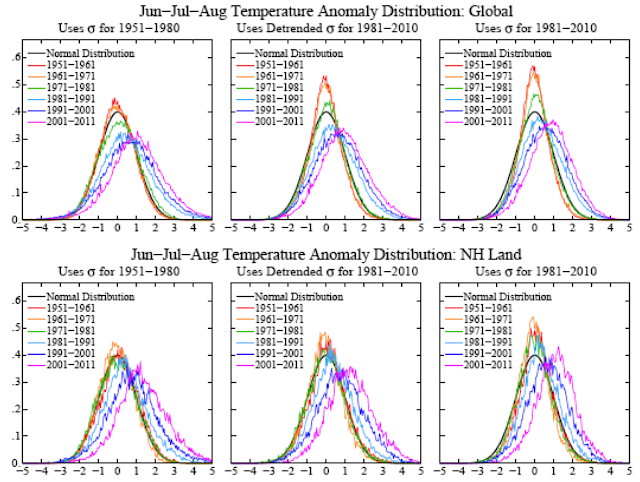Well, at long last I venture another blog post. We'll see if I can keep this going...
I think most people noticed the warm winter and spring. Now we have official statistics: via
Climate Progress and
WunderBlog, we've just experience the warmest 12 consecutive months on record in the United States, and by far the warmest January through April temperature anomaly on record.


This kind of warming in Spring will probably turn out to be good for agriculture. It lengthens the growing season, allowing farmers to plant earlier.
The bad side of warming comes in summer months. Interestingly, we *still* haven't had
especially warm weather during the critical summer months in the key
crop-growing regions. The last two summers were warm, but just a
little warmer than average, according to our own extreme-heat
degree-day calculations. Here are some figures my colleague Wolfram Schlenker recently put together for degree days above 29C, our measure of extreme heat, in corn-growing areas between March and August. Both 2010 and 2011 were above average, but not by much. And based on the
evidence we have, the 1930s were a lot hotter than 1988.

My take on this is that we've been lucky. Tack this winter/spring weather anomaly onto historical mid-summer temperatures and agricultural production will take a huge hit. Farmers won't do badly at all, since they're mostly insured anyway and commodity prices will soar. But high prices would exacerbate the global food crisis.
Maybe, if we're really lucky, warming will continue in manner that affects Winter and Spring more than Summer. But I don't think we can count on that, and I don't think it's what climate models are generally predicting.
It might also be true that crops are becoming more tolerant to extreme heat. Last summer was unusually wet in the corn belt just before the heat wave struck, which may be why yields weren't hit as badly as we might have expected. Even so, yields were only slightly better than our model predicted. Here's a plot of
those predictions that Wolfram put together.




